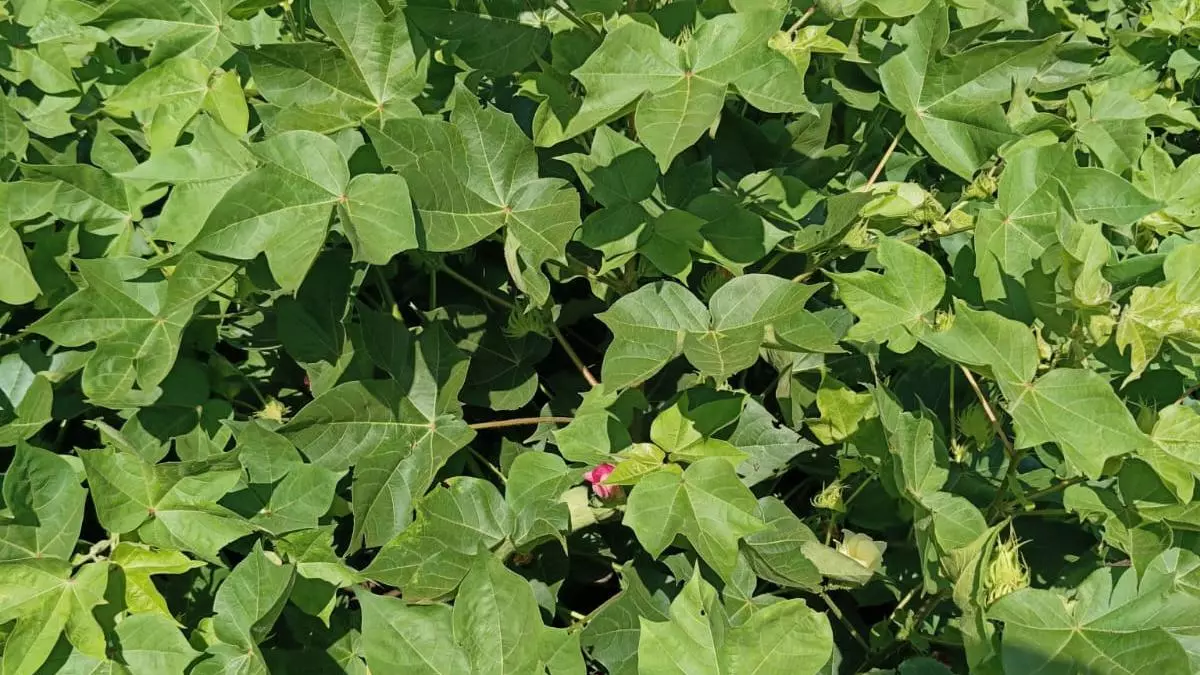Cotton gains on tight supplies, lower area, likely delayed arrival of new crop
Cotton prices have gained in the recent days on factors such as tight supplies, decline in kharif sowing and reports of incessant rains hurting the prospects in parts of Gujarat and Maharashtra, the major producing states.
Spot prices have moved up by ₹1500-2000 per candy of 356 kgs or 2.5-3 per cent over the past fortnight. Trade sources expect the prices to remain steady in the days ahead as arrivals are likely to be delayed by some 15-30 days on excess rains.
Atul Ganatra, President, Cotton Association of India (CAI) attributes the recent increase in prices to factors such as shortage of cotton, tight Indian closing balance sheet and lower sowing among others. The closing stocks of cotton for the 2023-24 season ending September are expected to be below 20 lakh bales of 170 kg each, he said.
- Also read: Soybean cultivation in Gujarat doubles in five years, spreads to cotton and groundnut-growing areas
Also the recent uptrend in cotton on ICE (Intercontinental Exchange), where futures prices have gone up from 66.35 cents to 70.35 cents have also contributed to the prices going up here, he said.
Ganatra said the lower sowing will affect the cotton production for next season 2024-25 starting October. As per Agriculture Ministry’s latest data cotton acreages in the ongoing kharif are down 9 per cent at 111 lakh ha over same period last year’s 122.15 lakh ha.
The decline is mainly of lower acreages in northern states such as Punjab, Haryana and Rajasthan and also in the major producing states of Gujarat and Maharashtra.
In Gujarat, the acreages are down around 12 per cent at 23.58 lakh ha over same period last year’s 26.78 lakh ha.
Similarly in Maharashtra, the acreages are down at 40.78 lakh ha from previous year’s 41.86 lakh ha. Rajasthan has seen area decline to 5.13 lakh ha (7.90 lakh ha last year), followed by Haryana at 4.76 lakh ha (6.65 lakh ha), Punjab at 1 lakh ha (2.1 lakh ha), Telangana at 17.09 lakh ha (18.01 lakh ha), Andhra at 3.5 lakh ha (3.6 lakh ha). However, the cotton area has increased in Karnataka marginally to 6.69 lakh ha (6.55 lakh ha).
While the incessant rains are seen damaging the standing cotton crop in parts of Gujarat and Maharashtra, the trade is divided over the impact.
Ganatra said the heavy rains in parts of Gujarat and Maharashtra will definitely have an impact on the crop. “There has been wtaer logging in the fields as there have been heavy rains of 20-30 inches in the past 2-3 days,” Ganatra said.
While the excess rains in some areas may spell trouble for the crop in parts of Gujarat, Maharashtra and Madhya Pradesh, overall the rains may prove beneficial, said Anand Poppat, a Rajkot based trader.
He further said that the upward trend is likely to persist due to the tight stock position and also due to the delayed arrivals on account of late sowing across the country.
Though the excess rains are seen hurting the crop in parts of Maharashtra, the higher yields will help offset the impact, said Pradeep Jain, President of Khandesh Gin Press Association in Jalagaon.
Jain said the crop, till now, is good with no or little incidences of pest attacks. “In fact, it is better than last 2-3 years at this point in time,” he added. Further, Jain said that demand for cotton is up and that’s lending support to the prices, while there are no arrivals of raw cotton.
Ramanuj Das Boob, vice president of All India Cotton Brokers Association in Raichur said the crop looks very good in Karnataka, Telangana and Andhra where the rains have been good and timely.
“There is a feeling that the crop is likely to be delayed as a result of which the market has bumped up by Rs 1500-2000 per candy in recent days.
- Also read: Kharif sowing completed in 97% of normal area, acreage higher from year ago in most crops
Till September-end the market may remain steady in this range, as those who are not having stocks are only buying, while the big mills have stocks till November,” Boob said. Reduced stocks with Cotton Corporation of India, multinationals and the trade in general will support the prices, he said.
